
Lighthouse Pointe at Grand Lucayan
Irecently went on a weekend trip to Freeport to meet up with my husband’s parents and visit old family friends. Although he was born there and lived there until he was about 7 years old, he hadn’t visited in almost 20 years, and this was a first for me.
For those who aren’t familiar with the geography of this particular area, Freeport is the main city on the island of Grand Bahama. It’s the most northern city in The
The island of Grand Bahama was historically sparsely populated, with the sleepy town of Eight Mile Rock as the main center of commerce. Due to its proximity of only 56 miles to the east coast of Florida, the settlement of West End saw several booming periods as it became a stopping off point for smuggling supplies during the embargo of the American Civil War and bootlegging during American Prohibition. A logging industry emerged in the 1940’s which started attracting investors due to the island’s natural resources.
In 1955 a pair of investors involved with logging and
Unfortunately for Freeport, in 1967 a new government was formed and by 1973 the Nassau-based government had taken the country fully independent from Great Britain. The new government took a hard line against Freeport’s autonomous structure and it was required that they conformed to a new formula of rules dictated by the Nassau seat. This had the effect of adding another layer of bureaucracy, and additional licenses and fees for established businesses. In conjunction with that, the
But after my 4 day trip to Grand Bahama, I was amazed by what this island offered. And I was left wondering, why aren’t more people visiting, and considering relocating to Freeport?
Before I start touting how great Grand Bahama is and that it’s the end all and be all of

Still seeing the visible effects of Hurricane Matthew in West End that hit Grand Bahama in October 2016
So that being said, let me talk a little bit about my favorite things that Grand Bahama does offer.
PROPERTY
If I lived in West Palm Beach and had a boat, I would most certainly consider buying a second home in Freeport. Compared to South Florida or communities like Sandyport and Old Fort Bay in Nassau, the canal front homes are extremely affordable and there seems to be a surplus of canal-oriented communities. Although many of the condos are dated, the canal homes are of newer construction and solid build. The lots seem to have a decent amount of elevation, so there’d have to be a pretty good tidal surge during a hurricane to get flooding. The lot sizes are expansive and the canals are wide enough to fit a small cruise ship, giving you ample space so you don’t feel like you’re staring into your neighbor’s living room. If you lived in South Florida, you’d be able to hop in your center console on a nice day and

7000 sqft home in Freeport on 1.35 acres with 215 ft of

Photos courtesy of The Bahamas MLS
NATURE & WILDLIFE
The nature and wildlife is probably some of the best and most diverse on land that I’ve seen in The Bahamas so far. I have yet to visit the wildlife sanctuary in Inagua, so my mindset may be challenged at some point, but you still can’t beat the mix of city/nature that Grand Bahama offers. Throughout most of the country, the highlights are on or around the water, but on Grand Bahama I was amazed by the beautiful towering pine trees stretching for miles once you headed east from downtown Freeport. Due to Grand Bahama being a large landmass, it receives ample rain during the summer months, so the whole island (other than the skinny spit of land leading out to West End) was lush and green.
I visited Lucayan National Park and meandered on the walking trails through trees and native bush, and followed an elevated walkway above marsh and mangroves that led to a beautiful stretch of beach called Gold Beach. As the signs informed us, there is an intricate stretch of underground cave systems, making the Lucayan cavern system one of the longest surveyed in the world. A portion of the cave roof collapsed giving site-seers the opportunity to venture into the cave system by navigating a short flight of stairs. The cave is home to a colony of small bats and a freshwater pool. Other areas of the cave system are accessible by guided SCUBA tours.
We stopped for a brief visit at Garden of the Groves on the eastern side of town, which is a well established diverse jungle of native vegetation that seems to have escaped the wrath of the destructive hurricanes that have hit the island over the years. There was a little café perched on the edge of a pond and when we arrived, one of the chefs was on her break feeding the fish, turtles and a water bird. It was a peaceful reprieve from the city, just minutes away.
Our host lived in a community just east of downtown in a beautiful canal-front home. On our first morning we hopped in kayaks and explored the expansive canal system where there are dolphins, manatees, turtles, and a diverse array of shore and wetland birds around every corner. You could spend hours just kayaking around the canals, but as we ventured out into the calm open ocean on the south side of the island we found a long stretch of white sandy beach and a collection of beach bars that looked like a great hang out spot. Unfortunately, once we hit shore (and got caught in an extended rainstorm) we were told it was only bustling when the cruise ships were in port, and since there were no cruise ships in port that day, everything was closed. We stood under a cabana in the rain, with not a bartender in sight. But the next day we passed by in our friend’s skiff and the beach was jamming. There were jet skiers, people playing beach volleyball and kids playing in the surf.

Ben’s Cave, part of the Lucayan cavern system

Mangroves at Lucayan National Park

Garden of the Groves

Hiding out under a dock in a canal community during a rain storm
BARS & RESTAURANTS
While we had plenty of fresh seafood to keep us cooking at our friend’s beautiful home on the canal, we did venture out a few times. We took the fairly unscenic 45 minute route to West End and Old Bahama Bay for lunch one afternoon. Old Bahama Bay is a brightly colored development community that attracts fishermen and boaters due to its close proximity to South Florida. It’s both luxurious and laid back, catering to yachters and vacationers who are looking for the feel of being in the out islands, but with the ease of access from the US. There are swimming pools, restaurants, and what I saw to be the prettiest beaches on the island. On Friday nights they have live Rake n Scrape music and regular events that are open to community members. We spent the afternoon at Teaser’s Tiki Bar, perched between the swimming pool and the beach, under the shade of large coconut trees. We ordered cracked conch and sipped on cold beers, all the while enjoying the scenery.
We visited Banana Bay, a quintessential Bahamian beach bar perched on the edge of a crescent white sandy beach. Their menu was a typical offering of tasty Bahamian fare, including conch fritters and fresh fish, as well as plenty of signature cocktails. At low tide a white sandbar is exposed and the beach stretches expansively. Beach-goers can sight stingrays and small fish passing by in the shallow clear water.
We were due to meet an old family friend at Monkey Joe’s one evening so we headed down to the no frills bar perched on the harbor across from the bustling Port Lucaya center. We were warmly greeted by our waiter, Dyson. We told him we were waiting for someone, but got started with cocktails and an order of conch fritters. Dyson graciously kept an eye out for our companion and happily answered our questions about what it was like to live in Freeport. “I wouldn’t live anywhere else!” he boasted. An hour slipped by and our guest didn’t appear so we headed back home. Turns out he was caught up with a crisis involving a dead rat in the ceiling at his accounting firm, so we agreed to reconvene the next evening. Dyson welcomed us back and we had a lovely evening hearing accounts from our friend about growing up in Rock Sound, Eleuthera, moving to England as a young adult, and eventually landing in Freeport during the heydays in the 1960’s. He chose to stick around and has never regretted that choice.
We stumbled upon Bootleggers Coffee Company in Lucayan Village one afternoon and treated ourselves to a gourmet cappuccino. I also picked up their specialty goat pepper and balsalmic caramel dark chocolate bar. Yum! The owner described to us that the company was named for the rich history of bootlegging on the island. They can date their family heritage back to the 1600’s where, as with many families on the island, her great grandparents were sure to have had a hand in bootlegging and rum running.
Port Lucaya had plenty going on. There was a never ending maze of casual restaurants and bars, curio shops, art galleries, and the Marketplace where you can pick up a t-shirt or a straw craft. There’s live music on Friday, Saturday and Sunday nights in the Square and Junkanoo parades, concerts and fireworks on holidays.

A charming bar at Port Lucaya

Tourists enjoying outdoor dining at Port Lucaya

Daiquiri stand

The picturesque beach at Banana Bay

Cracked conch and cold beer at Old Bahama Bay

A wonderful selection of chocolates and coffee at Bootleggers Coffee Company
The island had a quiet feeling about it. That’s either a plus or a minus, depending on the type of person you are. For me it was fantastic. The island had a sense of space. There seemed to be enough going on, but you could escape cars and traffic in a heartbeat and be in the midst of a serene natural setting, without a person around, in a matter of minutes. The people in Freeport were warm and welcoming, and the customer service was some of the best I’ve experienced in the country.
All in all, I fell in love with the island. It’s shabby in areas, but there’s an underlying
For more in-depth travel information on accommodations, restaurants, sites and activities throughout the entire Bahamas, be sure to check out my travel guidebook, Moon Bahamas.

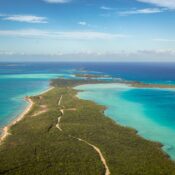
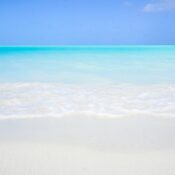
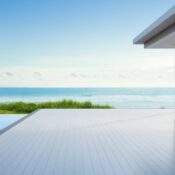
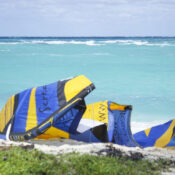
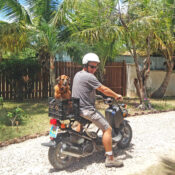
0 Comments